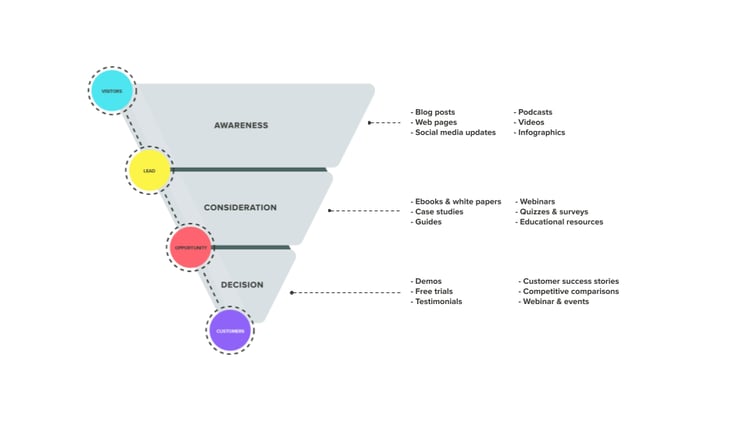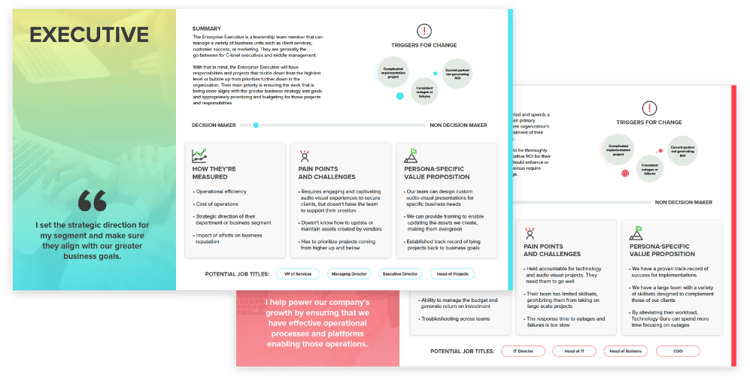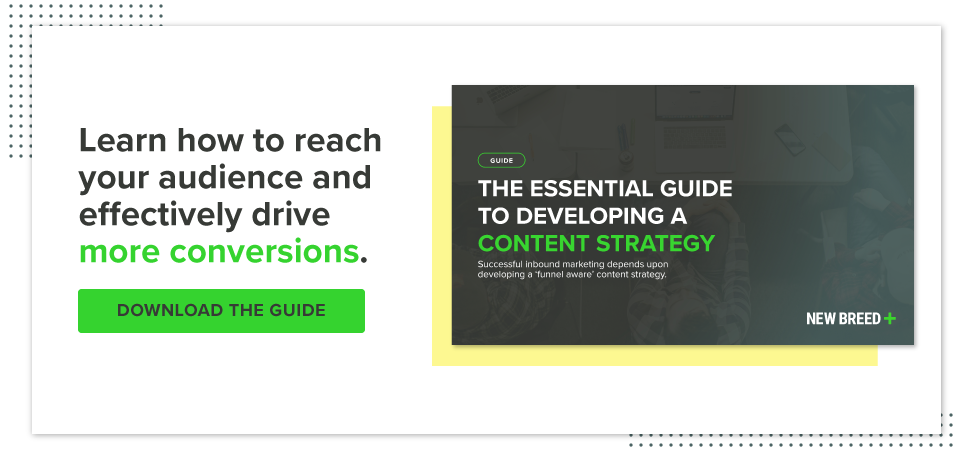How to Undertake a Content Gap Analysis
Content marketing is critical to the success of your business. With content marketing, you can build your authority and credibility, increase the visibility of your brand and improve lead generation.
But, to reap all those benefits, you have to do content marketing the right way. That means you need to create content that addresses your target audience’s needs. One of the ways to identify suitable topics to cover is through a content gap analysis.
What is a Content Gap Analysis?
Your content gaps are pieces of content that your ideal customer might be interested in but you haven’t created yet. A content gap analysis involves overlapping the content you have produced, most commonly on your blog, with an understanding of your ideal customers’ interests to identify those areas of opportunity.
A content gap analysis can help make your site the go-to resource for a specific topic.
4 Steps to Undertaking a Content Gap Analysis
All businesses — those using e-commerce platforms to sell products or those selling through their websites, bloggers and social media influencers — can follow these steps to ensure a successful content marketing strategy.
1. Map Out the Buyer’s Journey
The buyer's journey illustrates how someone discovers a problem, researches it and then buys a product to fix the problem. Mapping out the buyer’s journey is important because it will help you consider the type of content you should create.

The buyer's journey consists of the following three stages:
- Awareness: At this stage, buyers recognize, define and try to understand their problem. You, therefore, provide neutral content that explains their pain points and challenges.
- Consideration: Now your aim is to help them compare potential solutions. You should educate the prospect about all existing potential solutions. Most content at this stage should be about your category of the solution, not the specific offering. The quantifiable data about your product or service may, however, be introduced at the very end of this stage.
- Decision: Your aim in this stage is to reinforce the final decision of the buyer. So, you give product demos and provide them with product literature, for example.
To create an effective buyer’s journey, you should look at the touchpoints where people are interacting with your content. According to Business2Community, a marketing touchpoint is any point of interaction between a brand and a customer or potential customer.
2. Find Out What Your Audience Wants
Now it’s time to identify what content that resonates with your target audience you’re missing. To identify suitable topics, explore the following areas:
- Competitor Analysis: What has your competition produced?
- Interests/Pain Points: What are the interests and pain points of your target audience?
Let’s focus on the second point.
To determine who your target audience is, you can use buyer personas. A buyer persona is a fictional representation of your ideal buyer. A buyer persona looks something like this:

Through your buyer personas, you can determine your audience’s pain points and the types of resources they’d look for to address those.
You can also conduct a market survey to help you determine what kind of content your audience wants. According to Survey Monkey, there are three ways you can do this: conduct a market research survey, give out questionnaires or conduct interviews.
Giving out questionnaires and conducting interviews are your best options since they help you get as much information as you can from your audience. Ask your audience the types of content they’d like to have. Ask them, too, what content they need, but you don't currently provide. Create a list of the content they’d like you to have based on their answers.
3. Look at Your Competitors
You can identify other content gaps by looking at your competitors’ sites and online platforms. SEO tools like Ahrefs make it relatively straightforward to identify content gaps. In fact, they have a “content gap” feature.
You enter the name of a few of your competitors and then the name of your business. Ahrefs will share a list of all of the keywords your competitors rank for where you don’t have a presence.
Examine the content your competitors created in every step of their buyer’s journey. Don’t just look at their websites; look at their social media accounts, too. Make a list of their content that fares well based on engagement and other metrics like SEO.
You can then review the content or tools that they created and decide if you want to imitate their approach.
Document all the content gaps you identify. At the end of this process, you should have an extensive list of terms and resources.
4. Analyze the Content on Your Site
Now analyze the content on your website using the lists you created. You need to determine what content you want to create based on the content gaps you’ve identified. You’ll also need to identify what content you want to improve based on those content gaps.
You should do a comprehensive review of your content. That content includes:
- E-books and other premium content
- Paid ad content
- Content on social media platforms
- Content on landing pages and other site pages
When creating content to close the content gaps you found, consider how each of these content channels is used. Go back to the results of your buyer’s journey mapping and place the content you created in marketing touchpoints.
Remember that each piece of content should guide your leads closer to the bottom of the sales funnel so they can become paying customers.
Bottomline
Conducting content gap analyses is critical to your business success. It can help you determine why your current content is not performing, identify the steps you need to take to address that problem and conceptualize new content that will cater to your target audience.
Jimmy Rodriguez
Jimmy Rodriguez is the COO of Shift4Shop, a completely free, enterprise-grade e-commerce solution. He's dedicated to helping internet retailers succeed online by developing digital marketing strategies and optimized shopping experiences that drive conversions and improve business performance.





